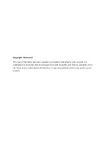Animating potential for intensities and becoming in writing: challenging discursively constructed structures and writing conventions in academia through the use of storying and other post qualitative inquiries
| dc.contributor.supervisor | Gale, Ken | |
| dc.contributor.author | Garland, Mary Catherine | |
| dc.contributor.other | PLYMOUTH INSTITUTE OF EDUCATION | en_US |
| dc.date.accessioned | 2022-02-11T14:08:32Z | |
| dc.date.available | 2022-02-11T14:08:32Z | |
| dc.date.issued | 2022 | |
| dc.identifier | 10540550 | en_US |
| dc.identifier.uri | http://hdl.handle.net/10026.1/18754 | |
| dc.description.abstract |
Written for everyone ever denied the opportunity of fulfilling their academic potential, this is ‘Chloe’s story’. Using composite selves, a phrase chosen to indicate multiplicities and movement, to story both the initial event leading to ‘Chloe’s’ immediate withdrawal from a Further Education college and an imaginary second chance to support her whilst at university, this Deleuzo-Guattarian (2015a) ‘assemblage’ of post qualitative inquiries offers challenge to discursively constructed structures and writing conventions in academia. Adopting a posthuman approach to theorising to shift attention towards affects and intensities always relationally in action in multiple ‘assemblages’, these inquiries aim to decentre individual ‘lecturer’ and ‘student’ identities. Illuminating movements and moments quivering with potential for change, then, hoping thereby to generate second chances for all, different approaches to writing are exemplified which trouble those academic constraints by fostering inquiry and speculation: moving away from ‘what is’ towards ‘what if’. With the formatting of this thesis itself also always troubling the rigid Deleuzo-Guattarian (2015a) ‘segmentary lines’ structuring orthodox academic practice, imbricated in these inquiries are attempts to exemplify Manning’s (2015; 2016) ‘artfulness’ through shifts in thinking within and around an emerging PhD thesis. As writing resists organising, the verb thesisising comes into play to describe the processes involved in creating this always-moving thesis. Using ‘landing sites’ (Arakawa and Gins, 2009) as a landscaping device, freely creating emerging ‘lines of flight’ (Deleuze and Guattari, 2015a) so often denied to students forced to adhere to strict academic conventions, this ‘movement-moving’ (Manning, 2014) opens up opportunities for change as in Manning’s (2016) ‘research-creation’. Arguing for a moving away from writing-representing towards writing-inquiring, towards a writing ‘that does’ (Wyatt and Gale, 2018: 127), and toward writing as immanent doing, it is hoped to animate potential for intensities and becoming in writing, offering opportunities and glimmerings of the not-yet-known. | en_US |
| dc.language.iso | en | |
| dc.publisher | University of Plymouth | |
| dc.rights | Attribution-NonCommercial-NoDerivs 3.0 United States | * |
| dc.rights.uri | http://creativecommons.org/licenses/by-nc-nd/3.0/us/ | * |
| dc.subject.classification | PhD | en_US |
| dc.title | Animating potential for intensities and becoming in writing: challenging discursively constructed structures and writing conventions in academia through the use of storying and other post qualitative inquiries | en_US |
| dc.type | Thesis | |
| plymouth.version | publishable | en_US |
| dc.identifier.doi | http://dx.doi.org/10.24382/1051 | |
| dc.identifier.doi | http://dx.doi.org/10.24382/1051 | |
| dc.rights.embargoperiod | No embargo | en_US |
| dc.type.qualification | Doctorate | en_US |
| rioxxterms.version | NA | |
| plymouth.orcid.id | 0000-0001-5018-6163 | en_US |
Files in this item
This item appears in the following Collection(s)
-
01 Research Theses Main Collection
Research Theses Main



